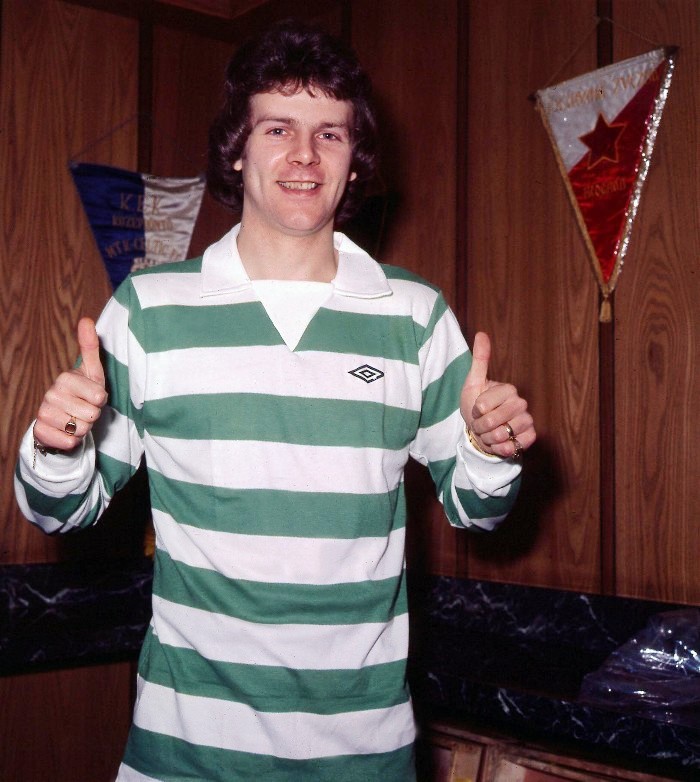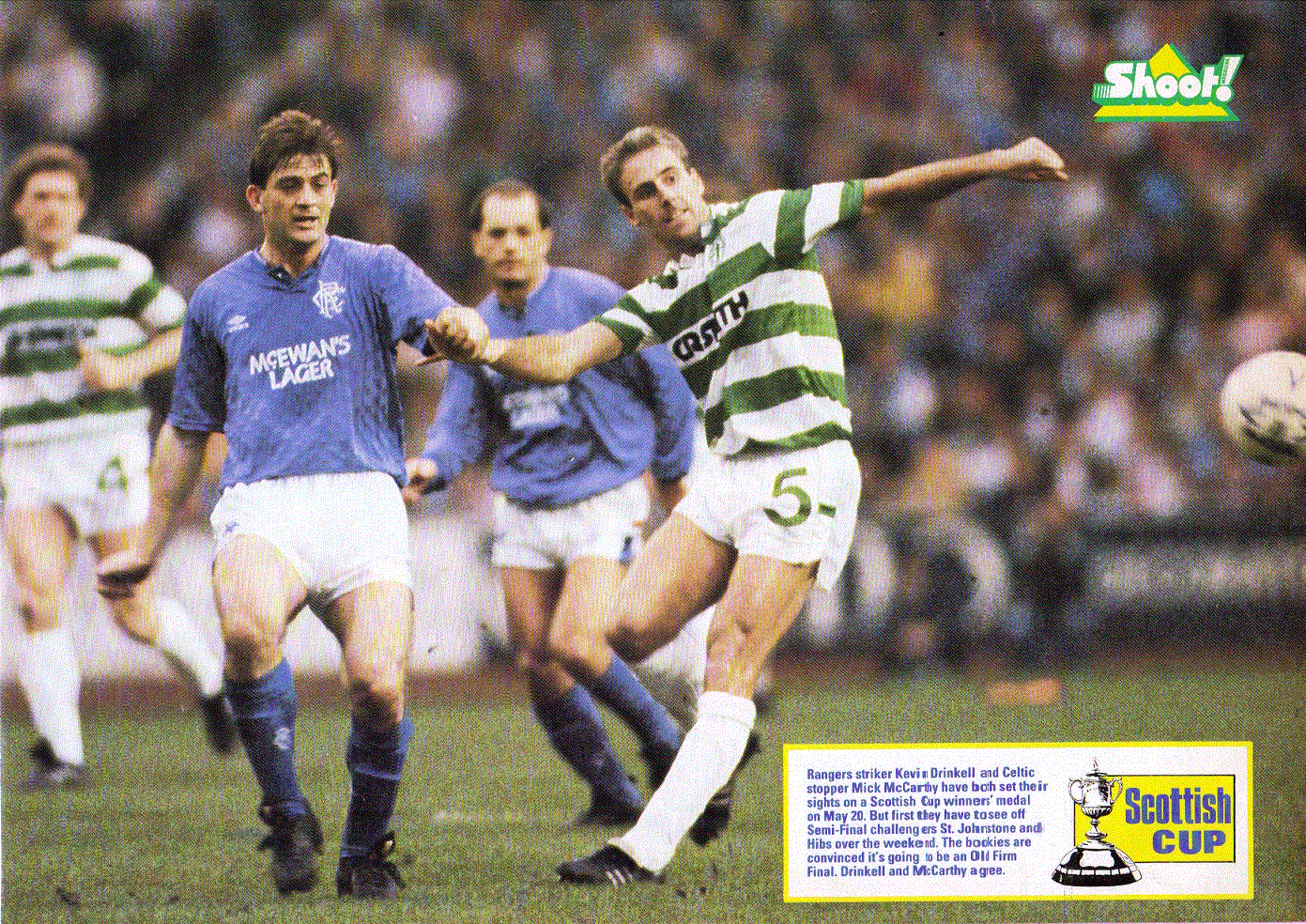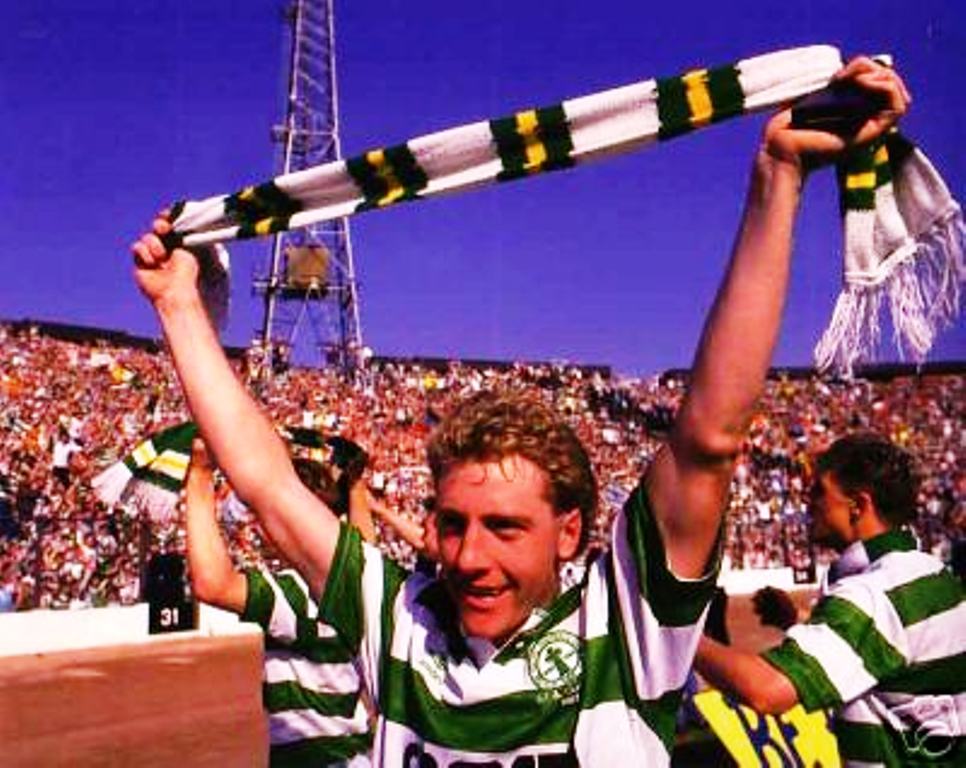Of the 42 senior clubs in Scotland I calculate that I’ve visited 27 of
them. If I told you that Celtic haven’t played a competitive match at
Firs Park (East Stirling) since 1963 or Central Park (Cowdenbeath)
since 1971 then you will see the difficulty in adding to that total.
Such places were often difficult to get results and even during the
Stein era it was not unusual for Celts to slip up against the likes of
Airdrie and Arbroath. In 1980 Celtic lost 1-0 at Annfield against
Stirling Albion in the league cup but fortunately it was a two legged
affair and Celtic won 6-1 in the return at Parkhead although only after
extra time and a dramatic last gasp Tommy Burns effort in the 90th
minute which brought about the extra period. Seldom did Tommy show more
delight after scoring a goal for the Celts than he did that day.
Visit Gayfield to play Arbroath and you quickly discover that the
ground is literally on the sea front. If a ball goes over the enclosure
with force it will probably reach the water. Lovely to visit on a
pleasant August afternoon in the League Cup but could be misery on a
winter’s day when it was blowing a gale. Boghead was aptly named as the
pitch could be like a glue pot and it’s funny to think of the modern
day player having to play in such conditions compared to the present
day pitches which are like bowling greens in comparison (Fir Park being
the obvious exception). When it was packed it had a decent atmosphere
as the fans were closer to the field of play and Dumbarton gave Celtic
some hard games then inspired by ex Celts Charlie Gallagher, Willie
Wallace and John Cushley and future Celts Murdo MacLeod and Graeme
Sinclair. Billy McNeill recalls weighing up big transfers for young
Dumbarton players Murdo MacLeod and Graeme Sharp and choosing Murdo
only as he thought it unlikely that the ‘Sons’ could unearth two such
talents in the same team. A bad move when you recall how Sharp became
an Everton legend in later years.
Airdrie had its quaint little pavilion, quite unique amongst Scots
grounds. Picturesque it may have been but the baying slobbering locals
also ensured that the ‘atmosphere’ was also unique with their hatred of
all things Celtic, something that has left a lasting impression even
after all these years. Rugby Park Kilmarnock had its superb playing
surface and you may recall the distinctive old Johnny Walker whiskey
advert that was painted on top of the enclosure which remained for many
a year. I always enjoyed going there mainly because it was the first
away ground I ever attended to watch a Celtic game.
The strength of the Scottish game in the 70’s can be illustrated from
the first division promotion race in 1977. St Mirren could boast
McGarvey, Fitzpatrick and Stark in their line up, Clydebank had the
precocious Davie Cooper and Dundee had a young talented Gordon Strachan
while Morton boasted Mark McGhee and ex Celt Andy Ritchie. Look at the
current first division and you will not find a single player as
remotely talented as them.
These days even when Celtic visit the likes of Falkirk, St Mirren,
Motherwell and Kilmarnock they can be soul-less affairs with a plethora
of empty seats, in a stadium devoid of atmosphere. Compare that to the
era of the terraces with the rousing atmospheres that were generated by
a packed crowd when you didn’t even have to buy a ticket in advance
because you could simply pay at the gate. Some of the attendances when
Celtic came to visit were terrific and packed the place out. In 1980
there were 27,000 at Love Street for a cup tie, 20,000, Cappielow
(1980), 18,000 Rugby Park 1979, 16,000 Boghead 1975, 15,000 Shawfield
1974 and 18,000 Falkirk 1986.
 It’s long been my opinion that the atmosphere at Scots grounds was
It’s long been my opinion that the atmosphere at Scots grounds was
never the same after the 1980 ruling on the ban of alcohol in stadiums
and/or being in a drunken state within the ground. It was
understandable that this legislation was made after the shameful 1980
cup final riot when Celtic and Rangers fans had a pitched battle on the
field of play but over zealous policing had fans worried of
repercussions and many opted to stay away. In 1979/80 Celtic’s average
home gate was 30,000 and the next season when we won the league it was
reduced to 21,000 (approximate figures) which is no coincidence.
However there’s no turning back and the days of standing, never mind
drinking, on an open terracing are long gone and despite campaigns in
certain quarters to bring it back it will never return.
Our first picture is taken from a league game at Boghead on 5th October
1974 which shows Ally Hunter clearing his lines under pressure from Roy
McCormack and a young Roddy MacDonald. This looks like the period when
Hunter took to wearing a red jersey instead of the traditional Celtic
keeper’s colours of green or yellow. Mind you these days Boruc can be
seen with all sorts of shades. Celtic won this game by 3-1 and you can
see from the trees in the background that Dumbarton was actually a
decent wee place to visit.
 The second image sees a Skol cup tie at Broomfield from August 1984
The second image sees a Skol cup tie at Broomfield from August 1984
which Celtic won 4-0. Airdrie keeper John Martin (He wants to play for
Rangers – scab, scab, scab !) saves as McStay and McClair attack the
Airdrie goal. John Colquhoun and Alan McInally can also be seen if you
look closely.
Thirdly we have an image from Gayfield Park home of the Red Lichties
which was taken on 19th August 1972. Celtic won 5-0 and you can read
the text on the pic. Judging by the short sleeves on show this would
have been one of the better days to visit Arbroath.




